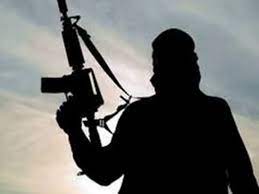The truth behind lofty poll promises
On May 20, at 7 am, polling got underway in Mumbai. I arrived at 6:55. In 1952 and every election that followed, I cast a ballot. I cast ballots in the Mumbai municipal elections, the Maharashtra Assembly, and the Lok Sabha. As a concerned citizen, I have never missed an opportunity to vote, with the exception of being sent away to Punjab and then Romania.

I walked the five minutes to the voting place with my neighbors, Satish Sahney and his wife Neelam. With the exception of the voting booth’s illumination, I was pleased with the provisions made for the elderly. A person with the same name as one of the two front-runners had been fielded in an attempt to mislead voters. A stronger light was required since the symbol that was allocated to him partially resembled the one that I wanted to use. Even five years ago, at ninety-five, the vision was not the same. But I don’t tend to make mistakes.
In the current elections, every vote counts. There would undoubtedly be little separation between the front-runners in any Mumbai constituency. This is the unintentional result of the coup that occurred two years ago and caused the Nationalist Congress Party of Sharad Pawar and the Shiv Sena, two of the biggest parties in my state, to separate.
Home Minister Amit Shah claimed during one of his election rallies that “we will liberate Pakistan-occupied Kashmir (PoK) if re-elected in the Lok Sabha polls.” Yogi Adityanath, the chief minister of Uttar Pradesh, who may challenge Modi for the position of prime minister, said at a different polling place that “PoK will be in India six months into Modi’s third term”!
Hemanta Biswa Sarma, the chief minister of Assam, made reference to the commonly believed but false notion that every Muslim man has four wives when he declared his intention to “shut down places producing Mullahs” and “end four marriages” during yet another BJP election conference. The two would-be prime ministers have said that it would be more difficult for India to retake Pakistan-held territory than it would be for Sarma to keep his word. That drill would require going to war with a neighbor that has nuclear weapons, which would undoubtedly prompt China to assist. Making the choice to go to war cannot be done at political rallies when grandiose pledges are made in an attempt to win over supporters.
Similar to poll manifestos, election pledges are carefully examined, analyzed, and discussed by opposing parties. The Congress has proposed to increase the ration by twofold; currently,
The Modi administration is now providing 5 kilos of rice or wheat to each bearer of a below-poverty-line (BPL) ration card at no cost. The incoming Finance Minister would have their job cut out if India wins, since more over half of the population is classified as BPL, defying the government’s claim that millions of people had been taken out of that category.
Will India, nevertheless, prevail? I’m not sure. However, it is accurate to say that compared to 2014 and 2019, this fight is much closer. Several prominent members of the Opposition have been successfully arrested by the Enforcement Directorate (ED). In order to avoid being hunted down by the ED or the CBI, it has also been successful in pressuring several other opposition figures to switch to the BJP. However, the Opposition parties have united out of concern that Modi may realise his vision of an Opposition-mukt politics via the inquiry agencies.
Opposition parties are making bold promises during the interim that, if fulfilled, would be disastrous for the nation’s economy. Furthermore, the people in our nation can become used to not just receiving constant freebies but also to not working. Freebies cannot last in any economy for very long. Any administration that is elected to power will inevitably need to prepare our young people for jobs that call for a variety of abilities, some manual but progressively more service-oriented.
Modi has said again and over again that with the Lok Sabha elections, the INDIA alliance would break apart. It is a warning that everyone in the area ought to heed carefully. Ideally, the political landscape should be split into two opposing factions: the BJP-led right-wing group and the Congress, Trinamool Congress, and Aam Aadmi Party-led left-wing group. Only regional significance exists for parties like the DMK and AIADMK of Tamil Nadu, the Bharat Rashtra Samithi of Telangana, the Telugu Desam Party, and the YSR Congress Party of Andhra Pradesh. They cannot be associated with either the Left or the Right. The situation with the regional parties scattered around the northeastern states is similar.
However, it would be ideal for two major ideologies—one to the left of the center and the other to the right—to vie for dominance at the center. First and foremost, it will be easier to understand for political workers, and by extension, it will be easier for regular voters to decide which side best fits their needs and goals.
It was projected by realpolitik expert Sharad Pawar that the smaller regional parties will combine with either the Congress or the BJP after these elections. That’s unlikely to happen anytime soon, given the aspirations of the politicians running in the current elections, including Mamata Banerjee and Arvind Kejriwal.
There is a recurring narrative that says people aren’t ready to think about a change of leadership just now since there isn’t a leader like Modi. Rahul Gandhi, the son of an aristocratic family, has, nonetheless, made significant progress in the last year. Though he hasn’t quite caught up, he has now established his relevance. A year ago, this was not the case, but throughout the electioneering process, I heard from individuals who wanted to give him another opportunity.







